 1986 Hyundai Grandeur I (L) Dimensions, Size & Specs
1986 Hyundai Grandeur I (L) Dimensions, Size & SpecsMeasurements of the 1986 Hyundai Grandeur I, engineered for optimal performance and comfort
| Dimensions | |
|---|---|
| Length: | 4865 mm191.5 in16.0 ft |
| Width: | 1725 mm67.9 in5.7 ft |
| Height: | 1430-1450 mm56.3-57.1 in4.7-4.8 ft |
| Ground Clearance: | 165 mm6.5 in0.5 ft |
| Trunk Capacity: | 460 liter16.2 cu ft |
| Weight Specifications | |
| Curb Weight: | 1390-1520 kg3064-3351 lbs |
| Tire Specifications | |
| Rims Size: |
|
| Tire Sizes: |
|
The Hyundai Grandeur I (L) marked Hyundai's early foray into the executive sedan market, produced from 1986 to 1992. This first-generation Grandeur, also known as the Azera in some markets, was designed as a premium sedan offering spaciousness and solid build quality. With an overall length of 4865 mm (191.5 inches), a width of 1725 mm (67.9 inches), and a height ranging between 1430 mm and 1450 mm (56.3 to 57.1 inches), the Grandeur I provided a balanced and aerodynamic silhouette for its class. The curb weight varied between 1390 kg to 1520 kg (3064 to 3351 lbs), influenced by different trim and equipment levels. This mid-size executive sedan offered a comfortable interior with a generous luggage capacity of 460 liters (16.2 cubic feet), suitable for long trips or business use. Ride height was set at a practical 165 mm (6.5 inches), providing adequate ground clearance for urban and highway driving without sacrificing comfort. The vehicle rode on 14-inch rims with tire options including 195/70 R14 and 205/60 R14, offering a balance between ride quality and handling. The Grandeur I (L) established Hyundai as a competitive player in the upscale sedan segment during the late 1980s and early 1990s, combining functional dimensions and a solid presence on the road.
Discover the standout features that make the 1986 Hyundai Grandeur I a leader in its class
Have a question? Please check our knowledgebase first.
The Hyundai Grandeur I (L) sedan measures 4865 mm (191.5 inches) in length, 1725 mm (67.9 inches) in width, and its height ranges between 1430 mm to 1450 mm (56.3 to 57.1 inches). These dimensions position the Grandeur as a mid-to-large size sedan for its time, offering a substantial presence on the road while maintaining manageable proportions for urban driving. The length and width contribute to spacious interior room, while the moderate height helps aerodynamic efficiency and a sleek silhouette.
The curb weight of the Hyundai Grandeur I (L) ranges from 1390 to 1520 kilograms (approximately 3064 to 3351 pounds) depending on the trim and equipment. This weight balance aids in delivering a stable ride and ensures reasonable fuel efficiency for a luxury sedan of its era. While not excessively heavy, the weight supports a solid, planted feeling on the road, which translates to smoother handling at moderate speeds and stable cruising comfort for passengers.
The Hyundai Grandeur I (L) offers a luggage capacity of 460 liters (approximately 16.2 cubic feet). This capacity is quite practical for a luxury sedan from the late 1980s to early 1990s, enabling sufficient storage space for daily use, weekend trips, or grocery runs. Compared to other sedans of similar size during that period, this trunk volume provides competitive usability, balancing passenger comfort with cargo practicality.
The Hyundai Grandeur I (L) has a ride height or ground clearance of 165 mm (6.5 inches). This level of clearance is fairly typical for luxury sedans from the era, providing enough distance between the undercarriage and the road to handle typical urban obstacles such as speed bumps and uneven pavement. However, the 165 mm clearance means it might not be ideal for off-road or extremely rough terrain but is adequate for most paved and lightly uneven surfaces.
The Hyundai Grandeur I (L) came equipped with 14-inch rims. Tire sizes offered included 195/70 R14 and 205/60 R14 depending on the variant and market. These tire dimensions were typical for sedans of the late 1980s, balancing ride comfort with road grip. The 14-inch wheels contribute to a smoother ride by providing more sidewall height on the tires, which helps absorb bumps and irregularities on the road.
Yes, the Hyundai Grandeur I (L) can fit into a standard home garage. With dimensions of 4865 mm (191.5 inches) in length and 1725 mm (67.9 inches) in width, it requires a garage space that accommodates a length of at least 5 meters (approximately 16.4 feet) to comfortably park. Standard residential garages typically measure around 6 meters (20 feet) in length and 3 meters (10 feet) in width, making the Grandeur I well-suited for most home garages. Owners should ensure there is adequate clearance for opening doors and maneuvering around the vehicle.
The Hyundai Grandeur I (L), introduced in 1986, succeeded earlier compact or less luxurious models and represented a marked increase in size and luxury ambitions for Hyundai. Compared to Hyundai's previous sedans before the Grandeur line, this generation was significantly longer, wider, and more refined. While specific predecessor dimensions vary, the Grandeur I's nearly 4.9-meter length positioned it firmly in the executive sedan category, offering more spacious interiors, improved comfort, and road presence than Hyundai's prior attempts at large sedans.
When compared to contemporaries like the Toyota Crown, Nissan Cedric, and Mitsubishi Debonair sedans from the late 1980s and early 1990s, the Hyundai Grandeur I (L) held competitive dimensions with a length of 4865 mm and a width of 1725 mm. While slightly smaller or similar in footprint to some Japanese rivals, the Grandeur offered luxury features typical for its class such as spacious interiors and refined ride quality. It was Hyundai's statement sedan aiming to rival established Japanese luxury sedans, providing a solid choice in terms of size and equipment relative to its price point.
The Hyundai Grandeur I (L) presents a height range between 1430 mm and 1450 mm (56.3 to 57.1 inches). This variation in height depends on factors such as trim level, suspension setup, tire size, and optional equipment like roof antenna or windshield features. Differences can also arise from market-specific tuning, load conditions, or the presence of factory-installed roof accessories. The slight change in height plays a minor role in overall aesthetics but does not drastically affect interior space or driving dynamics.
The Hyundai Grandeur I (L) launched in 1986 as Hyundai's flagship sedan offering luxury and executive-level comfort within a mid-to-large size package. It showcased a refined design, sturdy build quality, and relatively advanced features for its time, including spacious seating for five, decent luggage capacity, and smooth ride quality. Its use of 14-inch wheels with balanced tire options underpinned comfort-oriented handling. Positioned to compete against Japanese luxury sedans, the Grandeur I represented Hyundai's ambition to elevate brand perception through size, luxury, and build standards during its production run until 1992.
Discover similar sized cars.
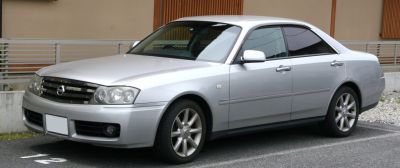
| Production: | 1999-2004 |
|---|---|
| Model Year: | 1999 |
| Length: | 4865 mm191.5 in |
| Width: | 1770 mm69.7 in |
| Height: | 1440-1465 mm56.7-57.7 in |
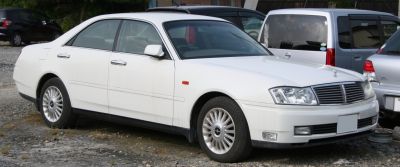
| Production: | 1999-2004 |
|---|---|
| Model Year: | 1999 |
| Length: | 4865 mm191.5 in |
| Width: | 1770 mm69.7 in |
| Height: | 1450-1465 mm57.1-57.7 in |
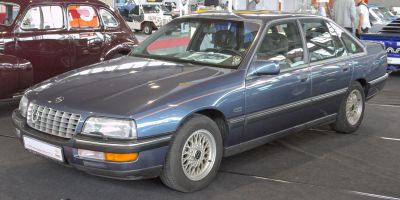
| Production: | 1987-1993 |
|---|---|
| Model Year: | 1987 |
| Length: | 4845 mm190.7 in |
| Width: | 1743-1763 mm68.6-69.4 in |
| Height: | 1452 mm57.2 in |

| Production: | 1997-2001 |
|---|---|
| Model Year: | 1998 |
| Length: | 4886 mm192.4 in |
| Width: | 1810 mm71.3 in |
| Height: | 1475 mm58.1 in |
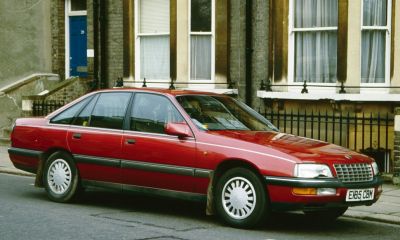
| Production: | 1987-1993 |
|---|---|
| Model Year: | 1987 |
| Length: | 4845 mm190.7 in |
| Width: | 1923-1932 mm75.7-76.1 in |
| Height: | 1450 mm57.1 in |
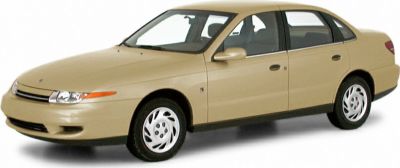
| Production: | 1999-2004 |
|---|---|
| Model Year: | 2000 |
| Length: | 4835 mm190.4 in |
| Width: | 1755 mm69.1 in |
| Height: | 1430 mm56.3 in |
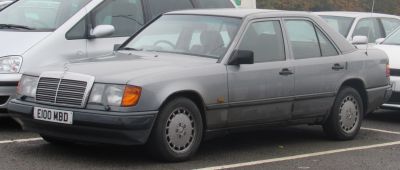
| Production: | 1984-1989 |
|---|---|
| Model Year: | 1984 |
| Length: | 4710-5000 mm185.4-196.9 in |
| Width: | 1730-1750 mm68.1-68.9 in |
| Height: | 1425-1451 mm56.1-57.1 in |
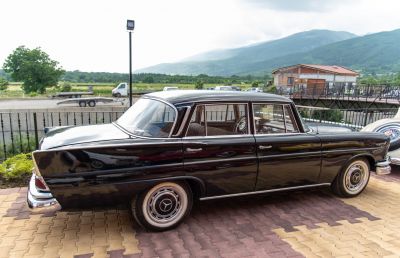
| Production: | 1959-1968 |
|---|---|
| Model Year: | 1959 |
| Length: | 4875 mm191.9 in |
| Width: | 1795 mm70.7 in |
| Height: | 1500-1510 mm59.1-59.4 in |
